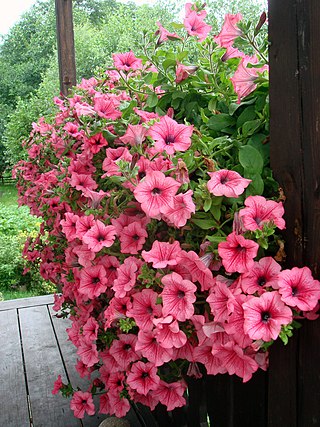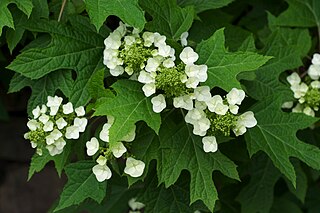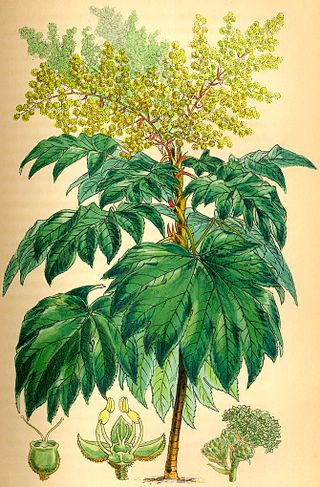
Ornamental plants or garden plants are plants that are primarily grown for their beauty but also for qualities such as scent or how they shape physical space. Many flowering plants and garden varieties tend to be specially bred cultivars that improve on the original species in qualities such as color, shape, scent, and long-lasting blooms. There are many examples of fine ornamental plants that can provide height, privacy, and beauty for any garden. These ornamental perennial plants have seeds that allow them to reproduce. One of the beauties of ornamental grasses is that they are very versatile and low maintenance. Almost all types of plant have ornamental varieties: trees, shrubs, climbers, grasses, succulents, aquatic plants, herbaceous perennials and annual plants. Non-botanical classifications include houseplants, bedding plants, hedges, plants for cut flowers and foliage plants. The cultivation of ornamental plants comes under floriculture and tree nurseries, which is a major branch of horticulture.

Hibiscus syriacus is a species of flowering plant in the mallow family, Malvaceae. It is native to areas of east Asia, but widely introduced elsewhere, including much of Europe and North America. It was given the epithet syriacus because it had been collected from gardens in Syria. Common names include the rose of Sharon,, Syrian ketmia, shrub althea (or simply althea), and rose mallow. It is the national flower of South Korea and is mentioned in the South Korean national anthem.

Salix purpurea, the purple willow, purpleosier willow, or purple osier, is a species of willow native to most of Europe and western Asia north to the British Isles, Poland, and the Baltic States.

Hydrangea quercifolia, commonly known as oakleaf hydrangea or oak-leaved hydrangea, is a species of flowering plant in the family Hydrangeaceae. It is native to the southeastern United States, in woodland habitats from North Carolina west to Tennessee, and south to Florida and Louisiana. A deciduous shrub with white showy flower heads, it is grown as a garden plant, with numerous cultivars available commercially.

Tetrapanax papyrifer, the rice-paper plant, is an evergreen shrub or tree in the family Araliaceae, the sole species in the genus Tetrapanax. The specific epithet is frequently misspelled as "papyriferum", "papyriferus", or "papyrifera". It is endemic to Taiwan, but widely cultivated in East Asia and in other tropical or mild temperate regions as well.

Mertensia virginica is a spring ephemeral plant in the Boraginaceae (borage) family with bell-shaped sky-blue flowers, native to eastern North America.

Cornus alba, the red-barked, white or Siberian dogwood, is a species of flowering plant in the family Cornaceae, native to Siberia, northern China and Korea. It is a large deciduous surculose (suckering) shrub that can be grown as a small tree. As a popular ornamental used in landscaping its notable features include the red stems in fall (autumn) through late winter, bright winter bark; and the variegated foliage in some cultivars, such as C. alba 'Elegantissima'. C. alba can grow to 3 m (10 ft) high, but variegated forms are less vigorous. For the brightest winter bark, young shoots are encouraged by cutting to the ground some older stems at the end of the winter, before leaves are open. The oval fruits are white, sometimes tinted blue.

Hydrangea arborescens, commonly known as smooth hydrangea, wild hydrangea, sevenbark, or in some cases, sheep flower, is a species of flowering plant in the family Hydrangeaceae. It is a small- to medium-sized, multi-stemmed, deciduous shrub up to 2 m (7 ft) tall that is native to the eastern United States.

Salix udensis is a species of willow native to northeastern Asia, in eastern Siberia, northeastern China, and northern Japan.

Kalmia angustifolia is a flowering shrub in the family Ericaceae, commonly known as sheep laurel. It is distributed in eastern North America from Ontario and Quebec south to Virginia. It grows commonly in dry habitats in the boreal forest, and may become dominant over large areas after fire or logging. Like many plant species of infertile habitats it has evergreen leaves and mycorrhizal associations with fungi. It is also found in drier areas of peat bogs.

Aesculus parviflora, the bottlebrush buckeye or small-flowered buckeye, is a species of suckering deciduous shrub in the family Sapindaceae. The species is native to the southeastern United States, where it is found primarily in Alabama and Georgia, with a disjunct population in South Carolina along the Savannah River. Its natural habitat is in mesic forests, on bluffs and in ravines.

Chaenomeles speciosa, the flowering quince, Chinese quince or Japanese quince, is a thorny deciduous or semi-evergreen shrub native to eastern Asia. It is taller than another commonly cultivated species, C. japonica, usually growing to about 2 m. The flowers are usually red, but may be white or pink. The fruit is a fragrant, hard pome that resembles a quince.

Rosa virginiana, commonly known as the Virginia rose, common wild rose or prairie rose, is a woody perennial in the rose family native to eastern North America, where it is the most common wild rose. It is deciduous, forming a suckering shrub up to 2 metres in height, though often less. The stems are covered in numerous hooked prickles. The leaves are pinnate, usually with between 7 and 9 glossy leaflets. The pink flowers are borne singly or in small clusters and appear over a long period in midsummer. The fruits are small, round and bright red, rich in vitamin C and edible, being both used to make jams and tea. It grows in clearings, thickets, and shores. The plant attracts birds, bees, butterflies, and hummingbirds.

Amelanchier laevis, the smooth shadbush, smooth serviceberry or Allegheny serviceberry, is a North American species of tree in the rose family Rosaceae, growing up to 9 metres (30 ft) tall. It is native to eastern Canada and the eastern United States, from Newfoundland west to Ontario, Minnesota, and Iowa, south as far as Georgia and Alabama.

Itea is a genus of about 10 species of shrubs and small trees, commonly called sweetspires. The leaves are alternate. Flowers are small, with 5 sepals and 5 petals, borne in racemes or spikes.

Iteaceae is a flowering plant family of trees and shrubs native to the eastern USA, southeastern Africa, and south and Southeastern Asia. Some older taxonomic systems place the genus Itea in the family Grossulariaceae. The APG III system of 2009 includes the former Pterostemonaceae in Iteaceae. Consequently, it now has two genera with a total of 18 known species.

Cotoneaster salicifolius, the willow-leaved cotoneaster, is a drought-tolerant, evergreen to semi-evergreen, low-lying, small to medium-sized shrub with an arched branching habit. Specimens growing in the wild, however, are generally larger, averaging five meters in height. Although native to the mountains, mixed forests, and open places in western China, it is commonly cultivated in temperate climates worldwide. Cultivars have been bred in a variety of forms, as ornamental groundcovers or shrubs.

Linnaea chinensis, commonly known as Chinese abelia, is a species of flowering plant in the honeysuckle family Caprifoliaceae. It is a semi-evergreen, densely branched shrub with dark green foliage.

Itea ilicifolia, the holly-leaved sweet spire, is a species of flowering plant in the family Iteaceae, native to western China. It is an evergreen shrub growing to 3–5 m (10–16 ft) tall by 3 m (10 ft) broad, with glossy holly-like leaves and fragrant drooping racemes of greenish-white flowers, 30 cm (12 in) long, in summer and autumn. It is hardy, though young plants require protection from dry winds.

Plantago virginica, common names hoary plantain and Virginia plantain, is a species of plant native to North America and introduced in Asia. It is listed as a special concern in Connecticut. The Kiowa use it to make garlands or wreaths for old men to wear around their heads during ceremonial dances as a symbol of health. It is commonly found within the continental United States in the majority of states along coastal areas and on roads, though has become an invasive species to eastern China after its introduction c. 1980. It is an annual plant, blooming around the month of May.





















